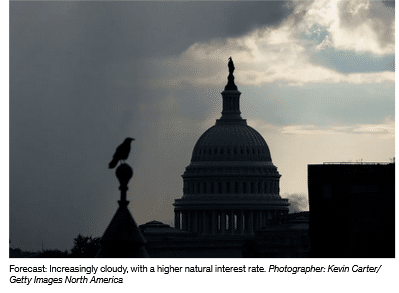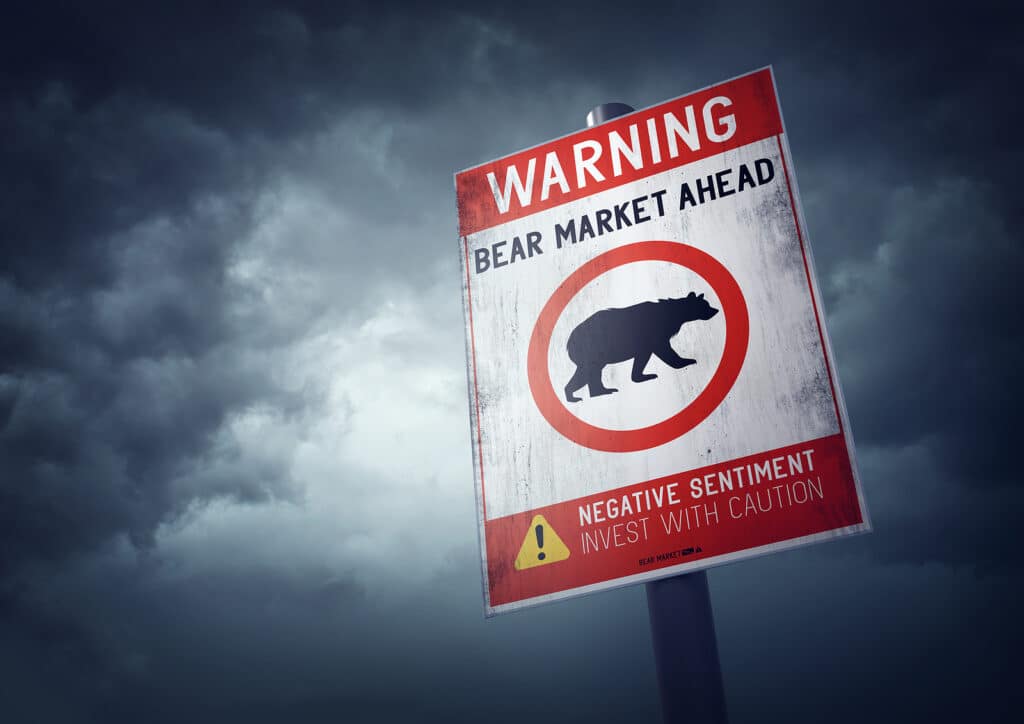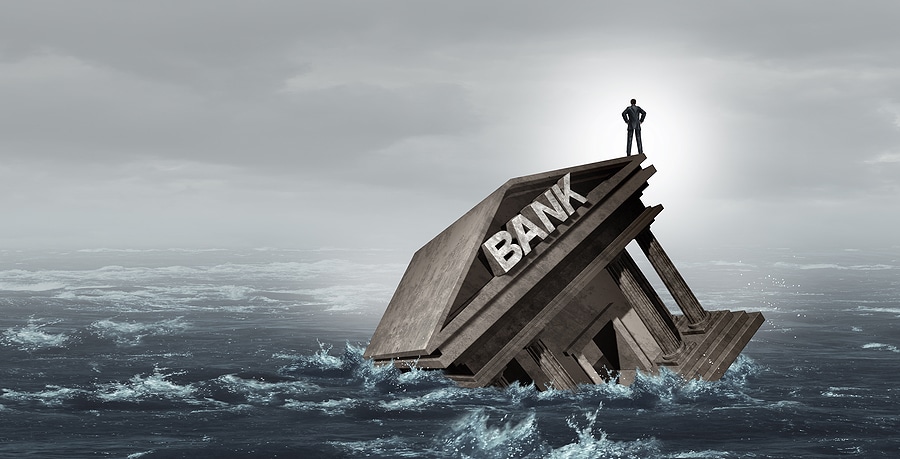
- The idea of a “neutral” rate of interest is unhelpful in setting monetary policy due to its complexity and difficulty in measurement.
- The neutral rate is more relevant in discussions of fiscal policy and the sustainability of public debt, as it determines whether a given fiscal path is manageable or calamitous.
- The natural rate of interest is expected to rise, making it harder to tame the debt trajectory, with factors such as fiscal excess, demographic change, and global economic fragmentation contributing to the increase.
The idea of a “neutral” or “natural” rate of interest looms over discussions of US monetary policy. Whether it’s any help in setting the course of monetary policy is questionable. Yet there’s no doubt it belongs at the center of a different, equally important discussion — on the sustainability of public debt. In that context, it gets far too little attention.
Briefly, using the neutral rate as a starting point for setting the Federal Reserve’s policy rate is unhelpful. You can define that idea in many different ways; however you define it, it’s hard to measure. Put simply, it’s the interest rate that balances saving and investment with stable inflation and no transitory shocks. Observers infer the Fed’s estimate of this number from the periodic “dot plot.” Beyond 2028, the central bank expects inflation to be back on target at 2% with the federal funds rate at 3%. So, the Fed thinks the neutral policy rate, in due course, will be 3% in nominal terms, or 1% after adjusting for inflation.
This doesn’t tell you what the neutral rate is right now — with inflation running well above the 2% target and all manner of shocks pushing this way and that. Even if you could filter out the shocks, the here-and-now neutral rate would be unclear in principle. The term could mean “not pressing up or down on inflation,” as many investors probably suppose. But many academic researchers take it to mean something else: the rate that would bring inflation back to target, either quickly, or slowly, or eventually.
If you ask central bankers where the policy rate stands right now in relation to the neutral rate, they will usually tell you, “It depends on what you mean by neutral.” Fed Chair Jerome Powell says that the current rate is “modestly restrictive.” He’ll keep saying the same if the Fed (as expected) cuts again later this month and then again in December, as long as inflation is still above target. Given all the complications and uncertainties, he’s unlikely ever to tell investors what they would love to know: how many basis points above the here-and-now neutral rate he believes the policy rate to be.
In short, the neutral rate is no help in fine-tuning monetary policy, and it’s probably a downright nuisance in explaining where the Fed stands. But the idea works much better for looking farther ahead. In fact, it’s indispensable to thinking intelligently about fiscal policy.
The US has settled into a posture of unprecedented fiscal lassitude. With the economy at full employment, the budget deficit stands at around 6% of GDP. Current policy projections show the ratio of public debt to GDP, already as high as the peak immediately after 1945, rising further and indefinitely — and nobody in Congress or the administration seems to mind. Earlier this year, the Congressional Budget Office projected an increase from 100% in 2025 to 156% by 2054. According to the Yale Budget Lab, the One Big Beautiful Bill Act will push that number to more than 194%. (Neither estimate takes account of tariff revenues, which remain anybody’s guess — but they won’t come close to stabilizing the debt ratio, let alone reducing it.)
The long-term neutral rate — for this purpose, let’s say “natural” rate — determines whether any given fiscal path is manageable or calamitous. Economists agree that the natural rate has declined over recent decades, perhaps by as much as three percentage points in real terms. This fall seemed to justify a more relaxed approach to fiscal discipline. If the natural rate is less than the rate of growth in GDP, budget deficits in moderation are sustainable — meaning consistent with a stable or falling ratio of debt to output.
Those days are over. The US budget deficit is now extraordinarily immoderate, the expected rate of economic growth is lower than before and the natural rate of interest is going up.
Just how much the natural rate might rise is of surpassing importance. It’s another complicated question. An excellent new book by my colleagues at Bloomberg Economics, The Price of Money, surveys the research and concludes that the real natural rate for US 10-year government debt fell from nearly 5% in 1970 to 1.7% in 2012, and is now on course to climb back to 2.8% by 2030. Combined with slower growth, this seemingly small change would make taming the debt trajectory much harder.
What’s driving the natural rate? Recall that it’s the interest rate that balances savings and investment. Fiscal excess is therefore a big factor. Budget deficits reduce national saving, which pushes up the natural rate, which in turn makes the debt more expensive to service, adding further to budget deficits. Note that the Bloomberg researchers predicate their estimated natural rate of 2.8% on the assumption that “governments get their finances under control and debt ratios stabilize.” If they don’t, the rate will rise faster.
Many other factors are in play, Slow growth pushes down the natural rate, because it makes investment less attractive. Pushing the other way is the need for greater investment in defense and clean energy. Demographic change raises the natural rate because a higher ratio of dependents to workers means less private saving and, most likely, higher budget deficits. Weaponization of the dollar through sanctions against Russia, China’s efforts to lessen its dollar dependence, and global economic fragmentation will cut demand for safe US assets — lowering their price and raising the natural rate. For decades, the prices of investment goods trended lower relative to consumer goods, pushing the natural rate down; that force is likely to be weaker from now on.
On balance, a continuing upward trend in the natural rate looks likely. To my mind, 2.8% in real terms by 2030 looks optimistic. And this trajectory is on a collision course with an ever more deeply entrenched complacency about budget deficits. So yes, let’s focus on the natural rate — not to get monetary policy right, but to peer into the fiscal pit we’re digging.
Read the full article HERE.


